OverExpressed
OverExpressedThe Future of Education
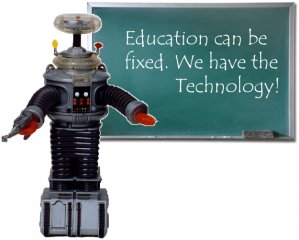 The most depressing class I ever took was freshman intro chemistry. Granted, it was advanced intro chemistry (oxymoronic, but that’s how the course identifications work at MIT; extra numbers = harder, extra letters = easier). So this was 5.112 (as opposed to the standard introductory 5.111). So why was it so depressing? I had learned the majority of this stuff already in my high school AP Chemistry course. I had actually done rather well in the chemistry class, finding most of the material to be quite manageable and I scored as well as you can on the AP exam. That’s obviously not the depressing part, though.
The most depressing class I ever took was freshman intro chemistry. Granted, it was advanced intro chemistry (oxymoronic, but that’s how the course identifications work at MIT; extra numbers = harder, extra letters = easier). So this was 5.112 (as opposed to the standard introductory 5.111). So why was it so depressing? I had learned the majority of this stuff already in my high school AP Chemistry course. I had actually done rather well in the chemistry class, finding most of the material to be quite manageable and I scored as well as you can on the AP exam. That’s obviously not the depressing part, though.
The sad part came when I realized I had forgotten a significant amount of the material I had mastered only a couple of years earlier. Moreover, I was finding the material even harder the second time around. This made me come to two harsh realizations:
- My high school instruction was better than the equivalent MIT instruction for this particular course.
- I can forget something pretty quickly, particularly if I’m not using it regularly.
This really marked a turning point in my education. For the first time, I felt the frustration of viewing previously familiar material with virgin eyes. Realizing how short-lived any particular piece of knowledge could be, I decided I would no longer sweat the small stuff. I didn’t kill myself memorizing and practicing things that I didn’t find interesting or relevant for my near-term future. I grabbed the big picture, and delved in deeper just where I felt like it. As a result, MIT was a very pleasant experience for me. Unlike my indiscriminately intense study habits in high school, I decided to focus on just the parts I cared about, knowing that I’d have to relearn anything that I needed to actually use in the real world.
This obviously is not efficient. Both the impersonal method of instruction, and the (effectively nonexistent) means of knowledge retention in the current system leave quite a bit to be desired. So what will education look like in the future?
Education will be Personal
This is what we were all told in third grade while taking those silly tests to determine our learning style. I probably leaned more towards the visual/reading side of things, and secretly questioned the validity of “kinesthetic” learning, but it didn’t really matter anyway. These tests never had a real impact on anyone’s academic pursuits. Education is still done one batch at a time, with everyone receiving the same content. At best, some instructors mix teaching styles with some overlap in order to bring as many students along as possible (link), perhaps incorporating hands-on experiments, group discussions, and visual effects into a standard lecture. But this isn’t the ideal solution. When I say personal, I mean really personal.
Every student brings two wild cards to the education table: their learning style, and their current knowledge. Now those are some pretty huge frickin’ variables, and I’d argue the latter is most important. Yet, students are all presented with the exact same material within a given batch, at best receiving some sort of “refresher” or “catch-up” material. This can’t possibly fill all of the cracks. So you end up with a good percentage of students trying to learn new material on a foundations that is full of gaps. Not the best structural engineering approach. Especially considering you can’t really teach someone anything unless they almost already know it (forgot who said this – anyone know?).
Learning is incremental and it’s nearly impossible to really grasp new material before fully understanding the concepts preceding it. This is partially why I much prefer to read a whole textbook from cover to cover rather than receive whatever bits and pieces my teacher chooses are important enough to cram into an artificially-imposed academic calendar. Courses need to be personal not just to the student, but also to the material. Students should accomplish work at their own pace, with recommended windows for milestone completion to help motivate them along. The key is to always be progressing and retaining what you are learning, not necessarily to move faster than everyone else. Regular assessment of understanding would be integral, allowing students to review any modular subjects they might be lacking.
As an intermediate step, video lectures will become much more popular, and we’ll eventually see the “best” Physics 1 lectures rise to the top. This is already happening, with recent studies showing that 82% of students at University of Wisconsin-Madison would rather watch video lectures, with 60% saying they would even be willing to pay for those lectures. Their reasons generally were linked to a more personal experience (watching lectures “on-demand”, making up for missed lectures, etc.) But eventually, the standard lecture format will have to give way to more interactive media that tests and reinforces throughout the teaching process.
Interactive Learning will Take Over
While working at Lawrence Livermore National Labs, I took a few online training courses that involved interactive material. The interfaces definitely weren’t ideal, but they were a step in the right direction. Users were presented with flash-based tutorials followed by simple quizzes to reinforce key topics, with some navigation controls to help with reviewing material that was not adequately retained.
Imagine how much further this could be pushed. You could open up a video of a lecturer speaking, with interactive tutorial elements playing on the side. These could be standard graphs, figures, and videos, or more complex boxes taking in user inputs to produce simple visualizations that explain a concept much better than the waving of a hand or the scratching of chalk. MIT has some of this kind of content associated with their courses, but it’s definitely not as well-integrated into individual curricula as it should be. It’s fairly clunky to have to go back and search through a list of visualizations when you’re first learning (or subsequently reviewing) a topic.
So now you have a student immersed in an interactive lesson, maybe even taking advantage of some new Minority Report-style interface tools being developed by a few companies. Throughout the process, students can be prompted with questions to confirm they are grasping a concept before moving onto the next one. In large lectures, this doesn’t happen. If you get lost somewhere, you remain in the dark for the rest of your miserable time there. You could ask a question, but that’s a fairly inefficient solution in a large room of students where many people are not lost. But with gradual questions integrated throughout the process, it’s easy to identify any stumbling points. The software could even be smart enough to break a question down into component concepts, asking a second series of questions, and a third, and a fourth, and so on, until the root problem area is identified. The student can then review that area until he or she is ready to return to the work at hand. That’s real no child left behind.
Obviously there are some subjects that are more readily amenable to this new education platform. Mathematics, language, and the sciences are all excellent candidates. Some components of humanities education could also be addressed, with some modification. Writing might use peer-based editing and assessment (much like many writer groups that are being formed online today). Artistic and physical instruction can also be addressed with a range of new input devices. The Wii is great for a lot of things, and there’s finally an educational game for guitar hero with an actual guitar. These kinds of devices could eventually be integrated into a complete, interactive learning environment that is much more personalized than anything that could be offered in batch classroom settings.
Optimized Review will be Critical
A number of studies have emphasized the value of spaced repetition for memory retention. The basic idea is that, after you’ve learned something it is very easy to remember upon review the next day. Then, as time goes on, it becomes harder and harder to remember until you have no clue what it was anymore. It turns out it’s probably optimal to review this material right before you’re about to forget it. With spaced repetition, you review the concept at optimally-designed intervals to make sure you never forget the concept, with minimal time expenditure. A number of companies have been developing software to help push spaced repetition, but it has mostly been limited to desktop applications with flashcard-style learning (great for language, but sub-optimal for most other things). Smart.fm has received quite a bit of press lately for applying these strategies in a simple, web-based platform.
The successful integration of optimized review right into the learning process will have a huge impact on education, helping students to actually remember most of what they’ve been taught, and saving all of the wasted time catching everyone up at the beginning of every new semester.
It will be Cheap and Ubiquitous
Right now I’ve got a phone in my pocket that is more powerful than the average computer was a few years ago. And on that phone I have access to millions of bits of absolutely free information, anytime and (almost) anywhere.
Of course many people rely on Wikipedia as the trusted source for a first go, but expert-produced content is making its way into the free space. There are a number of sources for free video lectures, including my personal favorite. An MIT alumnus has even started a Youtube channel that offers comprehensive instructional videos on everything from chemistry to differential equations to banking (1000+ videos!, thanks for pointing it out, Jamie). And recently, open source textbooks have gained some momentum with Flat World Knowledge and Wikibooks. Our very own Governator even pushed an initiative this year to get open source textbooks in high school classrooms throughout California, with the hope of ensuring high-quality and affordable education for everyone.
Ultimately, I believe educational content will become extremely cheap or free. But I don’t just mean video lectures and textbooks. I’m talking about entire educational programs with web-based content that’s optimized to improve students’ learning. Initial investments developing these programs will pay off as they drastically reduce many other economic burdens imposed by the traditional education industry.
And being web-based, these tools will be available to everyone with an internet connection, a number that is continuing to grow. Phones could even be used for rapid review of appropriate content. You could run through some vocab or quick math problems while waiting in line. And it could even become addictive if presented in a game format. The popularity of educational games on devices such as the Nintendo DS demonstrates that people are both willing and eager to apply their brains to constructive problems in gaming environments. So education will be cheap, everywhere, and addictive.
But Classrooms Still Have a Place
Moving to an entirely digital education would obviously have some terrible repercussions for social development. From the beginning of my time at MIT, I realized the reason the place was special wasn’t because of any fancy machines or brilliant lectures. It was special because of the connections you could make with some really amazing people. They used to say that at MIT there are three things that take up your time: Sleep, Social, and Study. You can only choose two. Anyone in my freshman dorm can tell you that Social ranked pretty highly for me, with Sleep taking a bit of a back seat.
Although some peer discussion could take place online, students will need actual human interaction to prepare them for the inherently collaborative nature of modern working environments. That’s why these tools would largely have to be an enabling supplement for higher-level discussions and projects in a classroom setting. Students could complete 80% of the learning on their own, with teachers and parents monitoring their progress via web interfaces. Then they could go to class knowing they have something substantial to contribute to bigger, more integrative goals.
So when do I get my robo teacher?
I’ve primarily been discussing ideal education systems for the future, but what’s practical in my lifetime? The biggest issues may lie in the fact that education is a huge industry. And like any huge industry, it has a lot of inertia that will take time to adjust. AcademHack has a great video presenting the issues our outdated “knowledge creation and dissemination” system will face in a modern, connected world. There are going to be some tough growing pains, much like we’ve seen with the recording industry, the film industry, television networks, and publishers. But clearly a lot of changes have to be made to reach an optimal system.
These tools will likely be implemented on a more individual basis in the near-future, as supplements to traditional schooling. However, it’s clear that our nation is moving towards efficiency by technology and personalization. We’ve been trying to get away from batchucation (coining a term – education in batches), and we finally have the web-based tools to make it happen. I’m excited to start using some of them to finally refresh all of the material I’ve inevitably forgotten.
Continue Reading | 11 Comments
Tags: education, Education reform, High school, MIT, teacher, Technology
Inspiring the Next Generation of Scientists and Engineers
As some of you are aware, I will be temporarily disconnected from the intertubes for the next couple of weeks while floating around the Peruvian Amazon teaching kids about healthcare, electronics, and the environment. The main idea is to provide some practical resources and training to children in remote settings, with the goal of inspiring the next generation of technological community leaders. The initiative, called Future Scientist, will hopefully expand to other locations with the goal of developing a sustainable remote education platform.
This is a bit of an experiment a few of us here at Berkeley are putting together, so we are expecting more than a few hurdles in the beginning. However, I believe we’ll be able to make some kind of an impact within the communities we reach, and we’ll ideally bring back some ideas about education and volunteering in general through constant and thorough needs assessment.
This trip will be a little reminiscent of my time in the Dominican Republic providing medical outreach to impoverished communities. However, there is the striking difference that this trip is grounded primarily in science and education, whereas the DR program was centered around community service through Christian missionary activities. In fact, the majority of this kind of aid tends to be supported (and financed) by religious institutions. So it will be interesting trying out some work under a secular model of sustainability.
In other news, I have finally launched my modeling career, starting with my painfully photogenic hands:
Next up is an interview with SugarSync (more on that later).
Tags: Community service, Dominican Republic, Engineering, Health care, Peruvian Amazon, Science, Volunteer
The Scientific Journal of Failure
Science is riddled with failure
Really, it’s all over the place. It’s built right into the scientific method. You make a hypothesis, with a firm understanding that anything could happen to disprove your faulty notions. Sometimes it works and you see what you expected, and sometimes it doesn’t. And some of the most interesting discoveries of all time have come from these “accidents” where researchers stumbled on something that didn’t work how they expected it to.
However. The majority of these scientific snafus result in absolutely nothing. You just blew 16 hours and $3,000. Gone. But at least now you know that mixing A & B only produces C when you have the conditions very precisely set at D. But what happens to all of your failed attempts? Your (very expensive) failed attempts?
They disappear. There is neither forum nor incentive for researchers to publish their failures. This leads to an enormous amount of redundant effort, burning through millions of dollars every year (many of which are funded by the tax-payer). The system sounds really inefficient, right? So why do we do it?
People tend to focus on successes. Sure, things didn’t work out 6 or 7 or 17 times…but then one time it all came together. And then you go back and repeat every single obscure condition that led to your ephemeral success (even wearing the same underwear and eating the same breakfast – but maybe I’m just more scientifically rigorous than most). And what do you do? You manage to repeat the success and you publish it. Maybe you publish a parametric analysis showing how you optimized your result. But you have left a multitude of errors and false starts in your wake that will never see the light of day, leaving countless other researchers to stumble into the very same unfortunate pitfalls. It’s a real waste.
But this protects you. In the business world they call it “barriers to entry“. You’ve managed to find yourself racing ahead in first place on something and the only thing you can do to protect yourself is drop banana peals to trip up your competitors (fingers crossed nobody gets a blue turtle shell). On top of that, every time you publish something, you’re putting your reputation on the line. A retraction can be devastating, particularly for an early career. Why take such a risk just to publish something that doesn’t even seem very significant? It doesn’t help you any. But is this good for science? Of course not. You’re delaying progress. You’re wasting money. And, particularly in the medical sciences, you’re probably actually killing people.
So Let’s Document The Traps
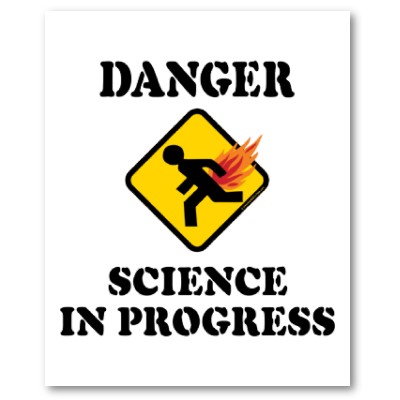
I propose a journal devoted entirely to failures. Scientists can publish any negative results that are deemed “unworthy” of standard publication. Heck, we can even delay publication by 6-12 months, to give the authors a little head-start on their competitors. And there would have to be some sort of attribution. But nobody wants their name attached to The Journal of FAIL. So let’s call it The Scientific Journal of “Progress”. Maybe without the quotes.
I wasn’t sure if such a journal existed already (though if it does, I certainly haven’t heard of it – and I’d probably be one of the biggest contributors, right behind this guy). The only close option that came up was the Journal of Failure Analysis and Prevention, but they seem to be focused on mechanical/chemical failures in industrial settings. So the playing field is still wide open.
Imagine if every experimental loose end was captured, categorized, and tagged in an efficient manner so that any person following a similar path in the future could actually have a legitimate shot at learning something from the mistakes of others. It would be kind of like a Nature Methods protocol, but actually including all of the ways things can go wrong. Authors could even establish credibility by describing why certain conditions didn’t work (a very uncommon practice among scientists). We might have to develop some technological tools that automatically pull and classify data as researchers collect it, making it a simple “tag and publish” task for the researcher. And people could reference your findings in the future, providing you with even more valuable street cred for the entire body of work you have developed (not just the sparse successes).
Of course none of this will happen any time soon. There simply isn’t enough of a motivating force to drive this kind of effort (besides good will). Maybe one day science will get its collective head out of its collective ass and things will change. And this will be one of those things. In the meantime, I will do my best to record and post tips on avoiding my own scientific missteps.
BONUS WEB2.0 TOOL: TinEye
[you’ve read this far, you deserve a reward]
I originally did a google search for “Science Fail” and found the first image of this post on another blog. I was curious about the actual origins of the image, so I used the TinEye image search engine to find the real source. Tineye is just like any other search engine, except your query is an actual image. You just upload (or link to) an image of interest, and TinEye scours the web for any similar images (actual pixels, not metadata). I quickly found that the picture originally camed from a “Science as Art” competition sponsored by the Materials Research Society (MRS). TinEye searched over 1.1011 billion images in 0.859 seconds to find that result. Pretty nifty, right?
The obvious applications are for controlling the distribution of copyrighted images, and there are some potentially frightening applications of such technology for facial recognition in the not-so-distant future (imagine someone sees you on the street, snaps a picture surreptitiously, and does a quick image search to find out who you are – and they’re likely to find out everything). Scary. But still kind of fun.
Tags: Image Search, Medicine, Publications, Scientific Journal, Scientific method
Become a Research Subject
Rick's Brain on Science
Admit it. You like science. You thrive on the unknown. You seek adventure and mystery. You enjoy being enclosed in absurd magnetic fields while grad students sit safely in the room next door. Or maybe I’m alone there. But at least you like money.
Most universities with research programs have science. And that science sometimes needs human subjects. And usually those human subjects aren’t really subjected to anything that would be considered inhumane (as opposed to the kinds of things that inhuman animals are subjected to). And sometimes, if you’re lucky, those human subjects can be you.
There are many human experiments out there that are really quite mild (ask a few questions, fill in a few surveys, watch a few videos, spit into a cup, etc.), but they’re pretty interesting and can pay up to $15-$50 per hour for your trouble. Sure, you’re not going to make a living off of it (though some have, and there is a legitimate debate over a minimum wage for guinea pigs), but it’s a nice diversion that can help you rationalize buying a new wetsuit (true story).
So how do you get involved? If you live in Berkeley, just sign up for the Research Subject Volunteer Program (RSVP) and you can participate in all kinds of cool studies (mostly involving psychology – so it’s just fun games/questions). On top of that, if you do any kind of MRI experiment, you’re very likely to get a killer picture of your brain (as shown above). If you’re not fortunate enough to find yourself in the bay area, I would recommend doing a quick google search for “Research Subject Volunteer” + “Your Local Big University” and you’re likely to find some results.
So far I’ve participated in a few experiments between Berkeley and UCSF. I played some memory games in an MRI machine and got a picture of my brain (I thought the machine was relaxing and even started to fall asleep – my roommate, on the other hand, was intensely uncomfortable and vowed to never again volunteer for unnecessary cranial imaging). I’ve also watched some violent videos, to which my responses are presumably being correlated with genetic information found in my spit. So it’s all cool stuff.
They even have an experiment that will give you $210 to play video games for a month:
Relationships and Social Cognition Lab emotion and video games Three part study, involves two laboratory visits during which physiological responses will be monitored. In between lab visits participants will be asked to play computer games daily for half an hour for 30 days. Compensation: up to $210 Special Requirements:completed high school in the US, fill out screener: http://www.surveymonkey.com/s.aspx?sm=GWjkpIDz5amM1XaOd_2fZZ8A_3d_3d Location: UC Berkeley Campus
An interesting aside: in researching this article (yes, there was some “research” involved), I found that the Tufts School of Dental Medicine is the first result in a google search for “become a research subject”. I just particularly enjoyed how they “broke it down” for the laypeople:
What Is Research?
- Research is a study that is done to answer a question.
- Scientists do research because they don’t know for sure what works best to help you.
- Some other words that describe research are clinical trial, protocol, survey, or experiment.
- Research is not the same as treatment.
Maybe, just maybe, your diggs and reddits and tweetiemabobs will push the google-rated significance of this article above those tooth jockies at Tufts. Yes We Can!
Little-known fact: I do it for the adventure and mystery.
Continue Reading | No Comments
Tags: Psychology, Research, University of California Berkeley, University of California San Francisco
Google has a problem with DNA analysis
About a year ago, my roommate started a little DNA analysis journal club here at Berkeley. It was just meant to be a group of like-minded students discussing recent advances in analytical DNA technologies. He tried creating a Google group for that club, not expecting the fairly judgmental response he received…
Note that Google’s skilled text parser caught our hidden innuendo:
This group name is not suitable. You cannot include the text “anal” in the group name.
This is particularly amusing considering Google’s close ties with a certain consumer genetics company in the bay area. We ended up going with “DNA Journal Group” instead. Thanks for keeping it clean, Google!
Tags: DNA, Fail, Funny, Google, Google Groups
![Reblog this post [with Zemanta]](http://img.zemanta.com/reblog_e.png?x-id=22a873ff-ee12-4134-afd1-4d796bc51c88)
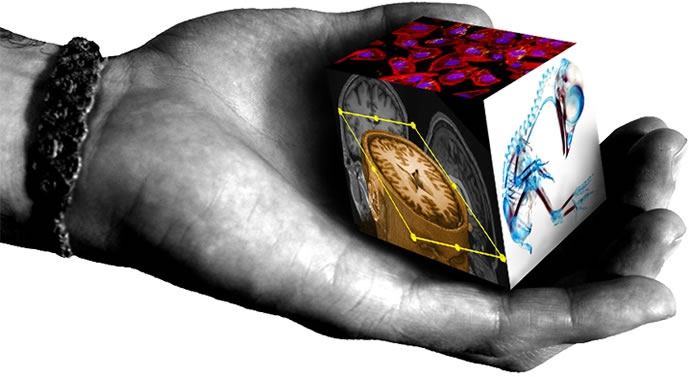
![Reblog this post [with Zemanta]](http://img.zemanta.com/reblog_e.png?x-id=5efdc9dd-48e9-4ff3-9d56-517fba668a02)
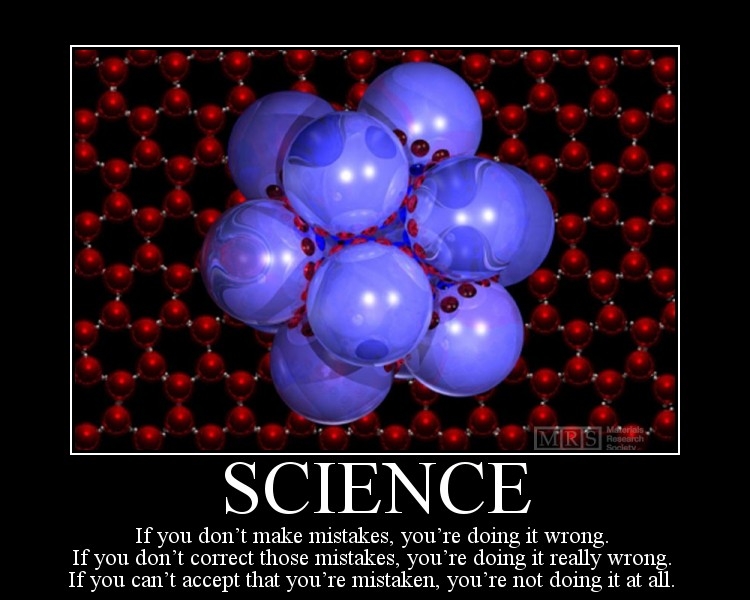


![Reblog this post [with Zemanta]](http://img.zemanta.com/reblog_e.png?x-id=cb61c8af-10cb-4b74-b0d9-9a2b7eb440a9)
![Reblog this post [with Zemanta]](http://img.zemanta.com/reblog_e.png?x-id=55721b5e-d4f6-4b4a-be43-6d07f0ac4adc)
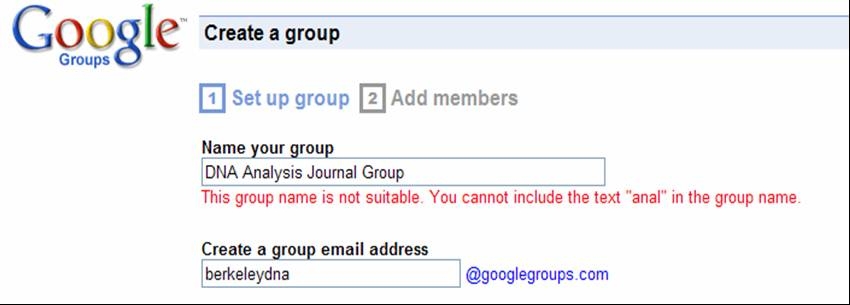
![Reblog this post [with Zemanta]](http://img.zemanta.com/reblog_e.png?x-id=78bd225a-4306-4a17-83f0-cf214579cb9e)